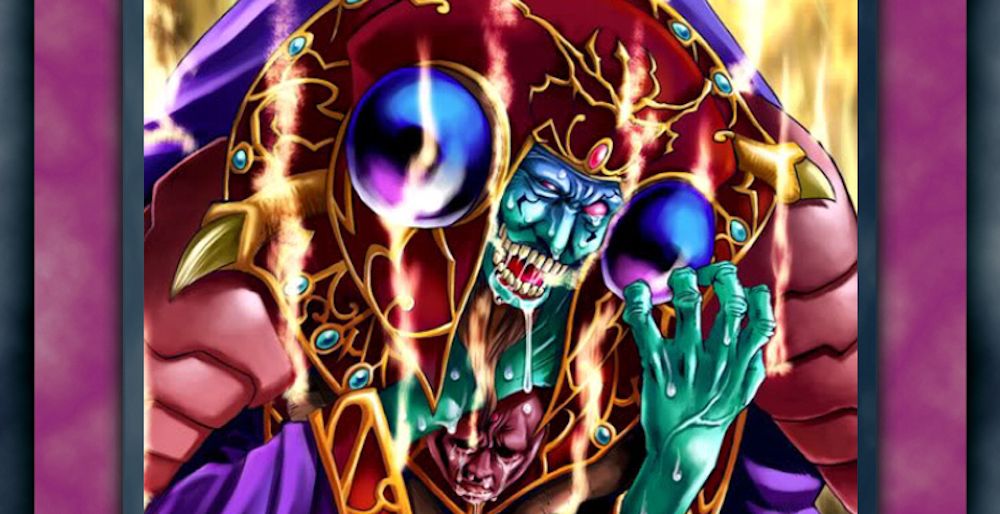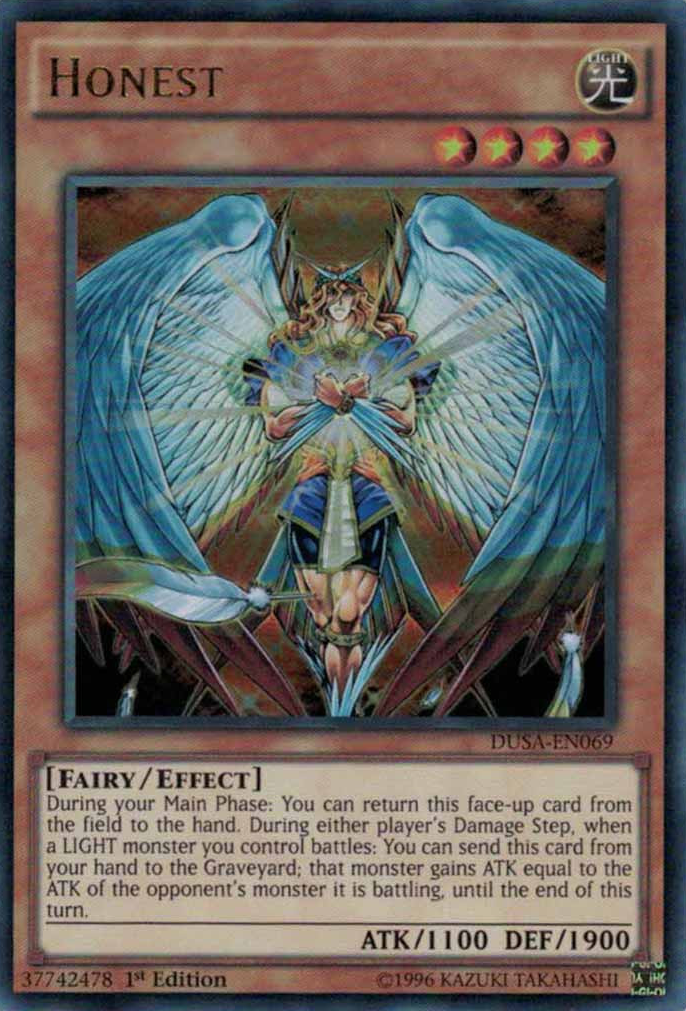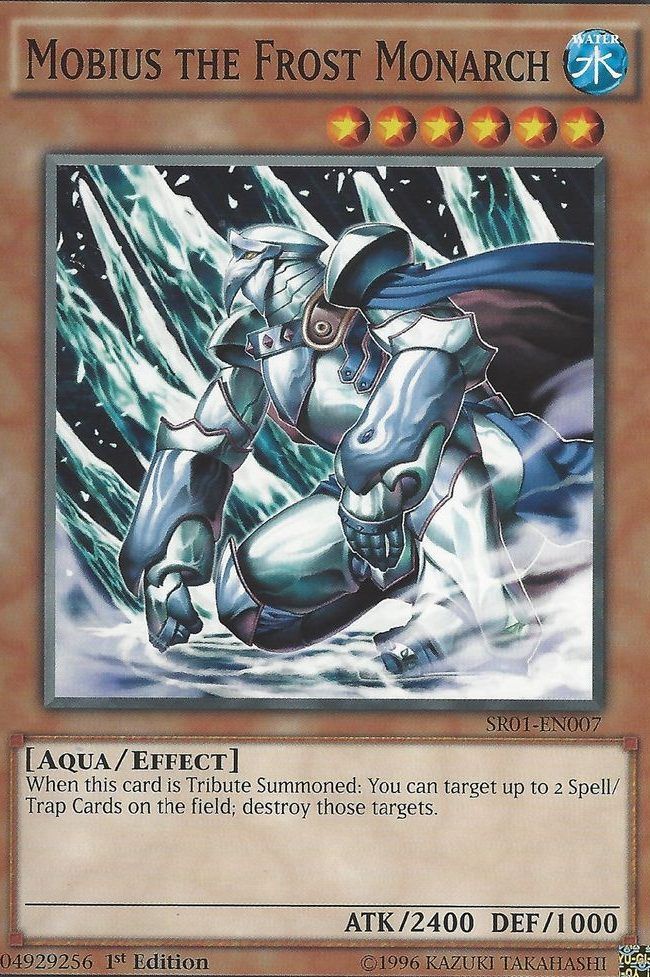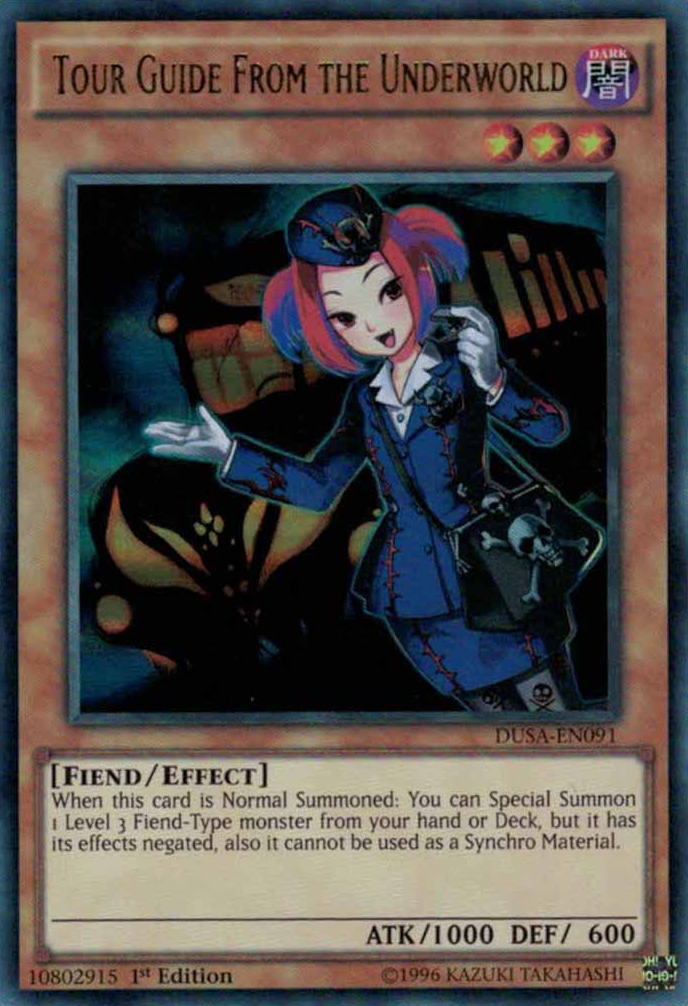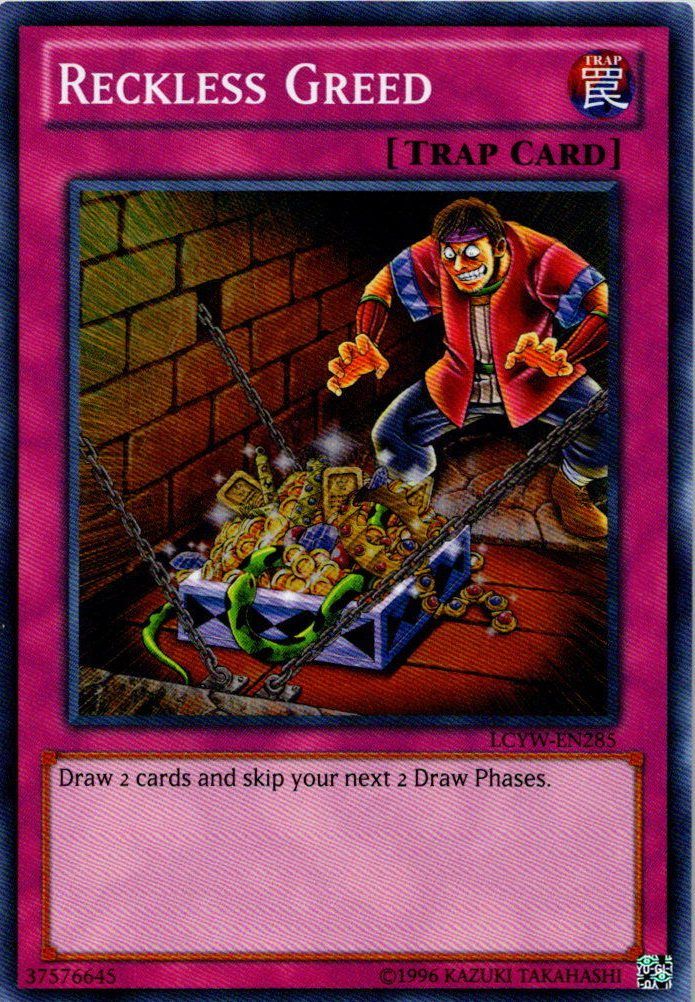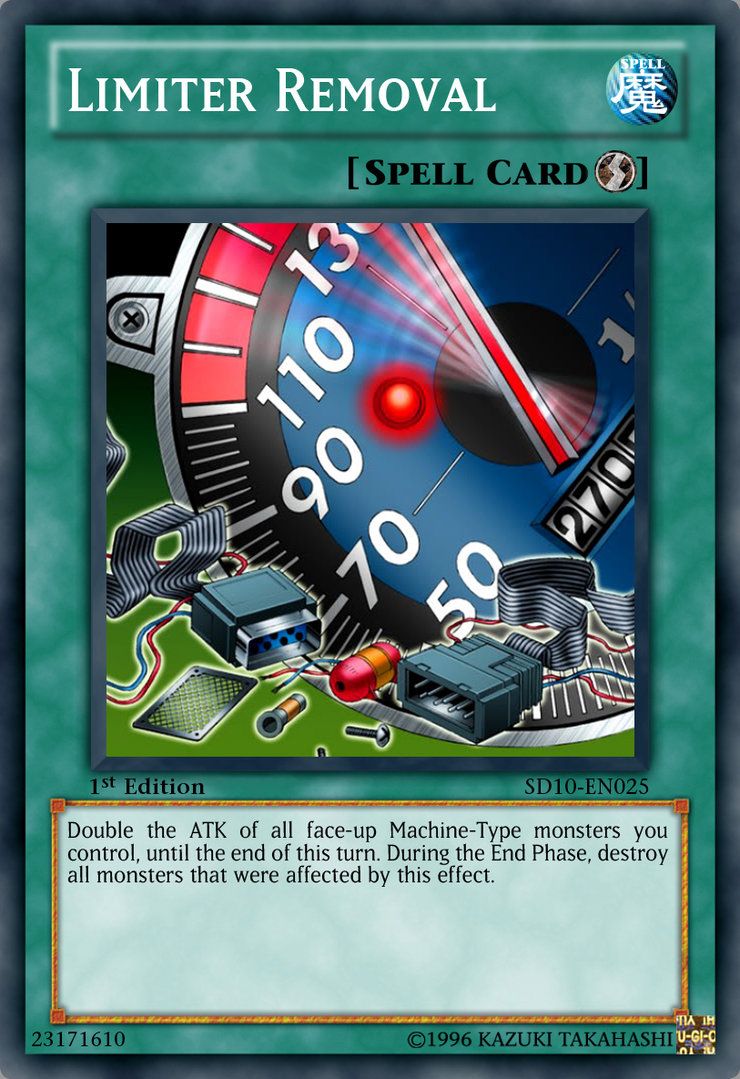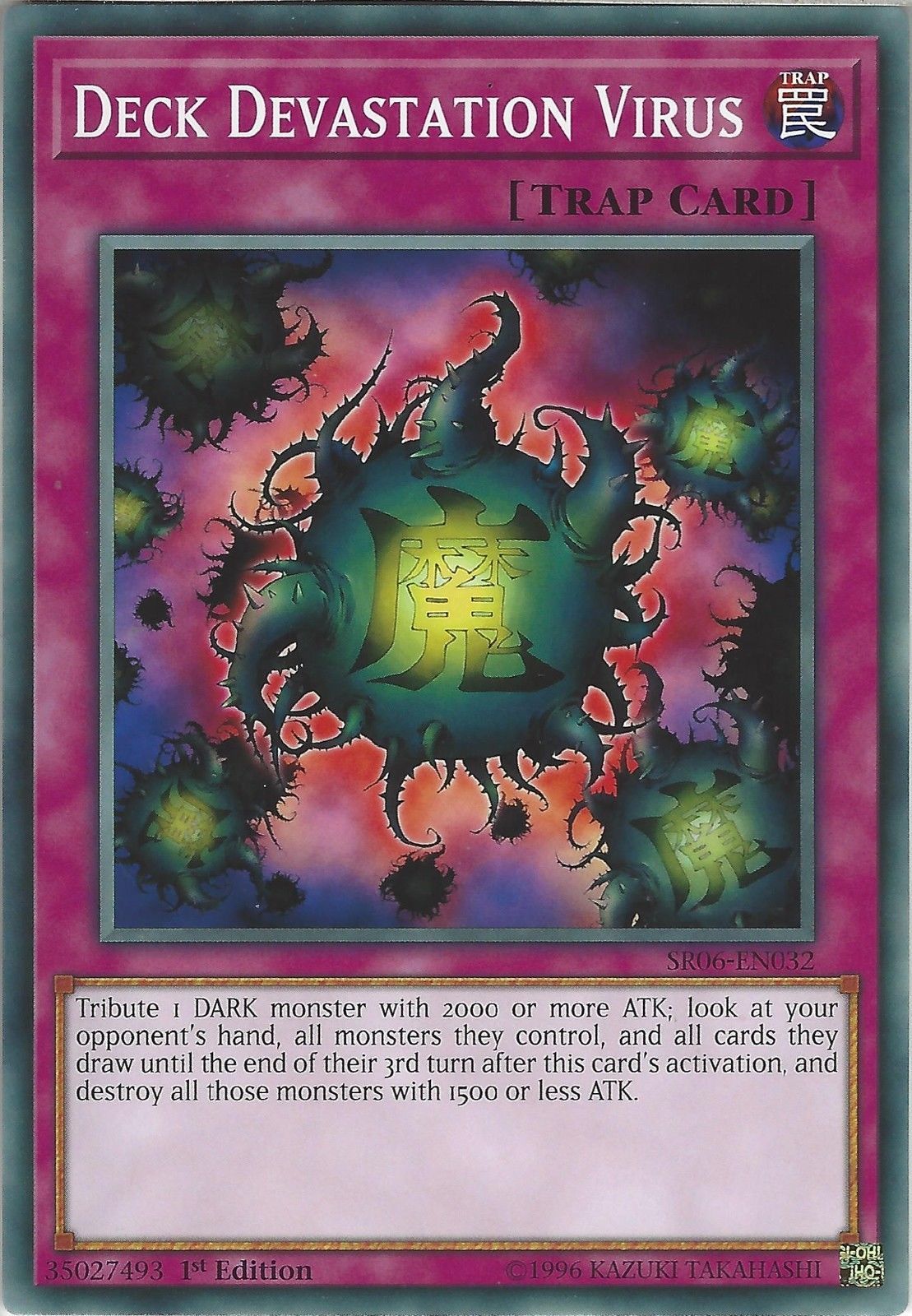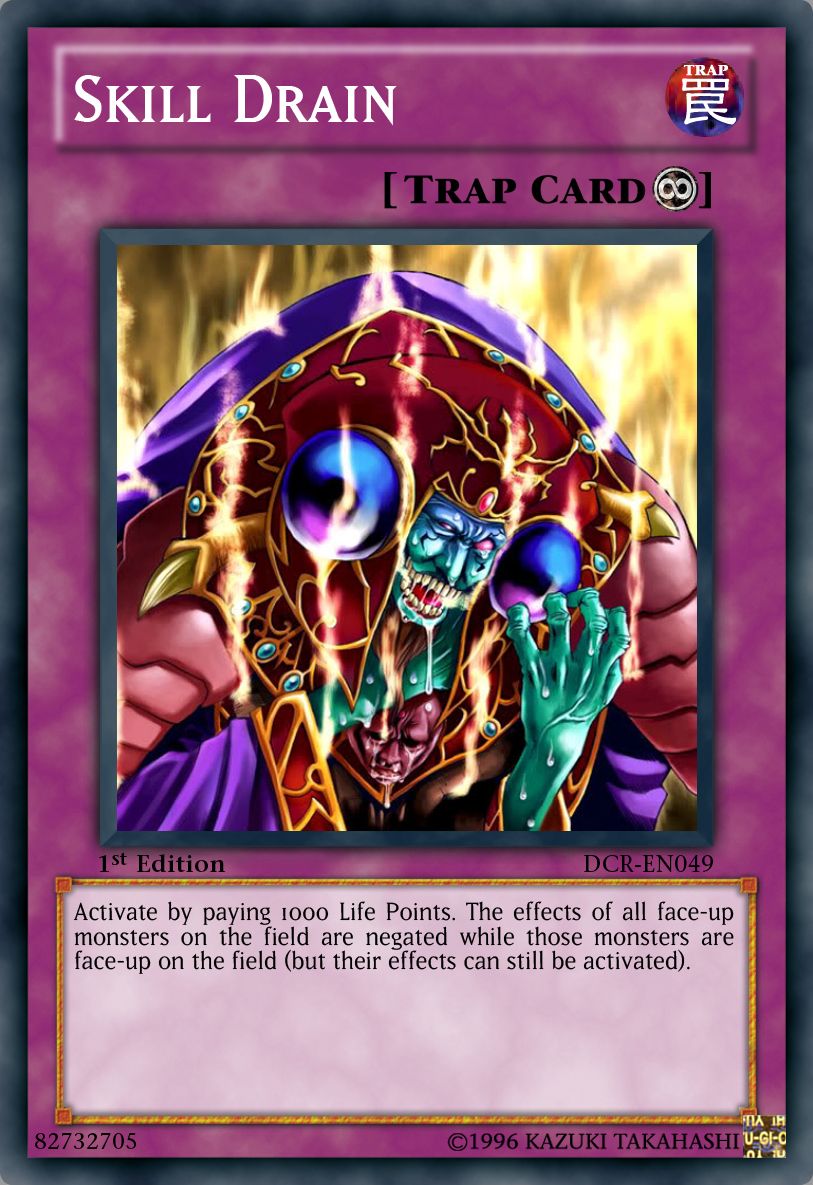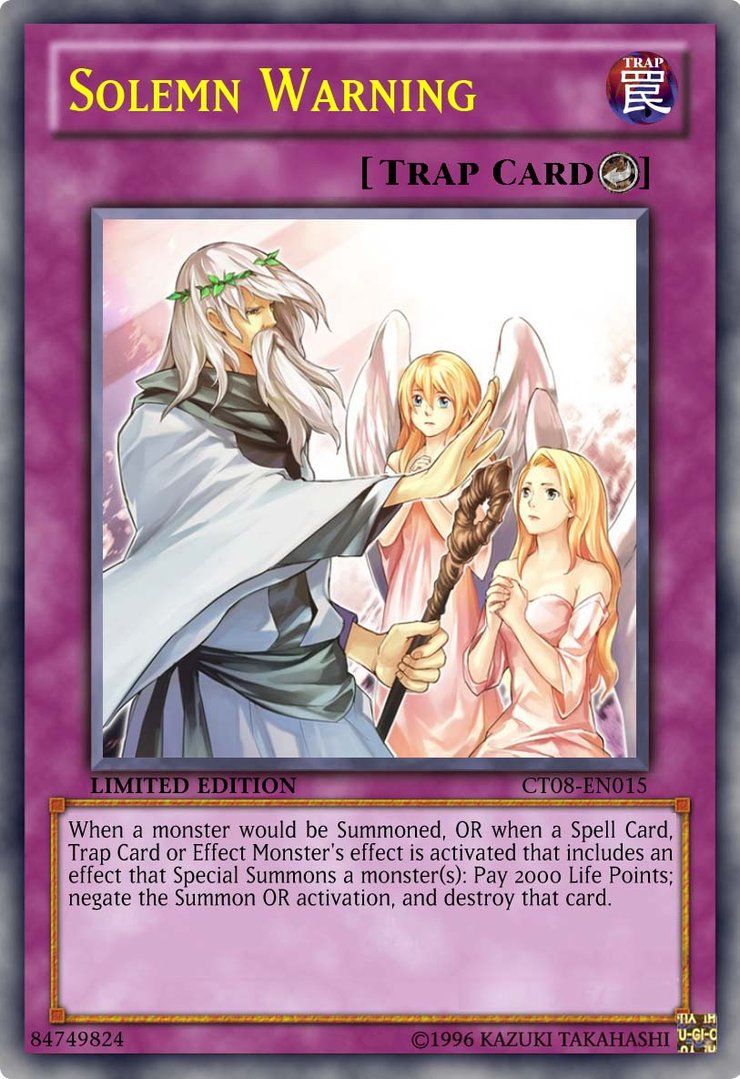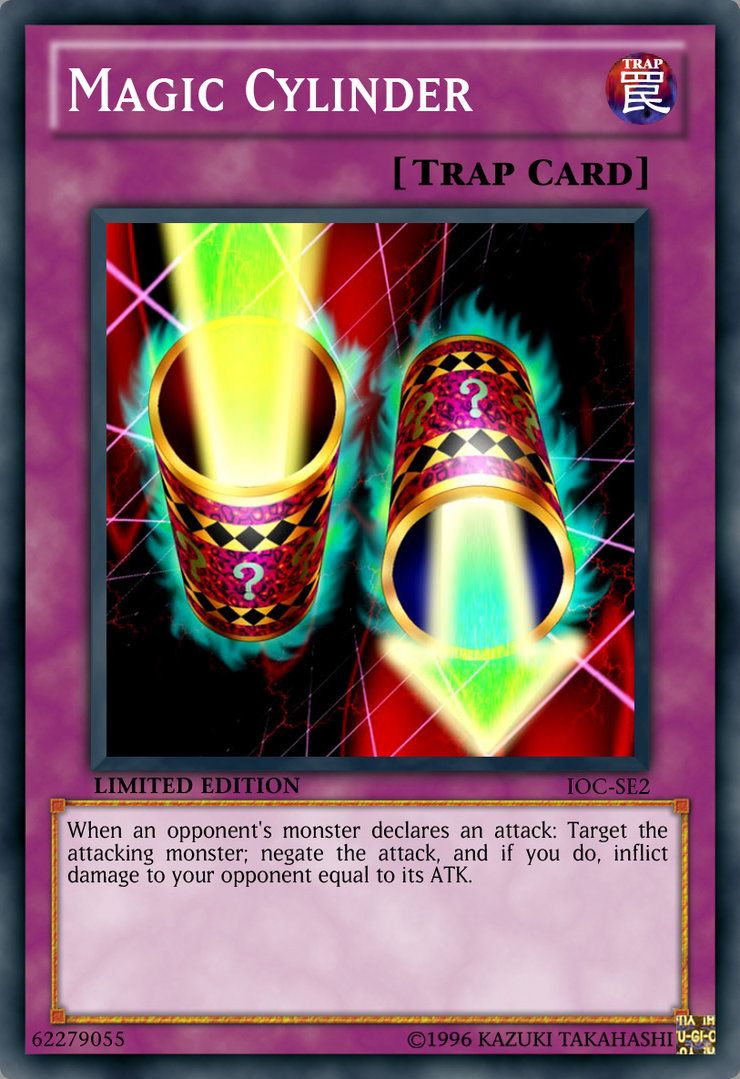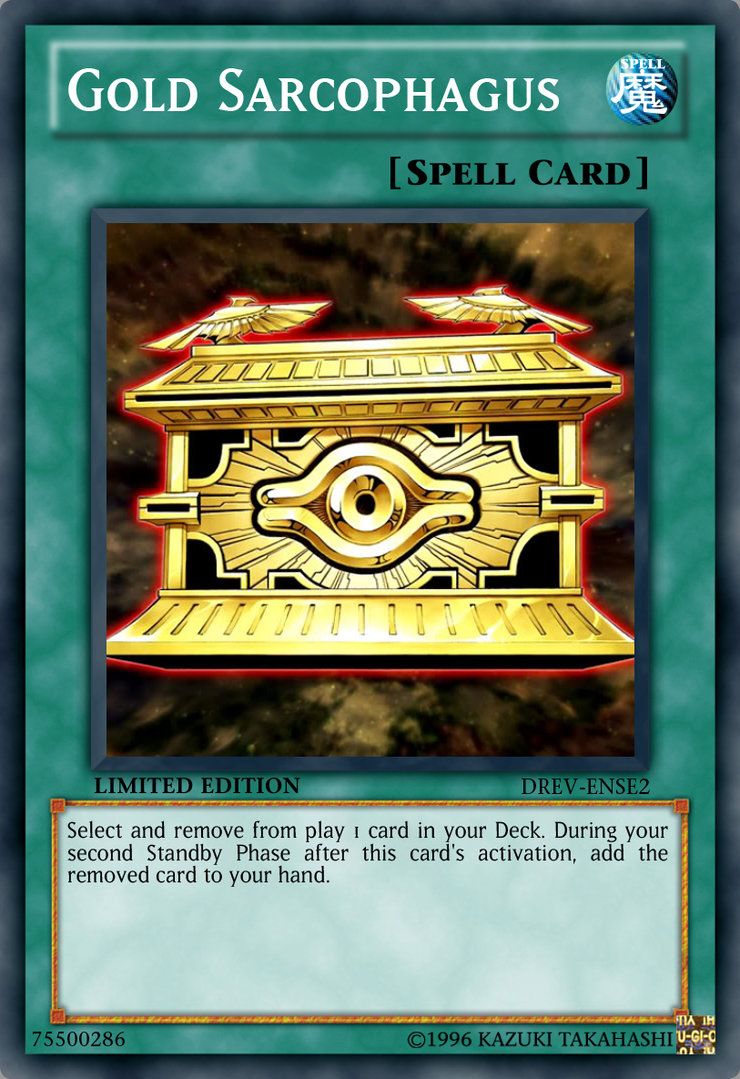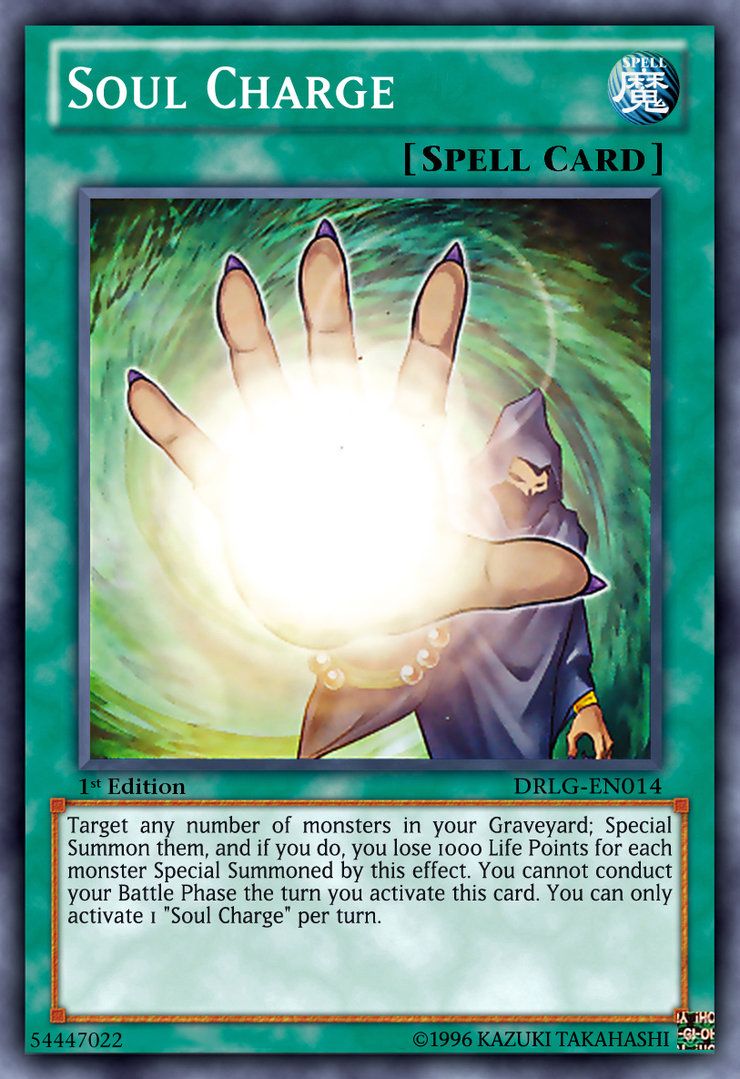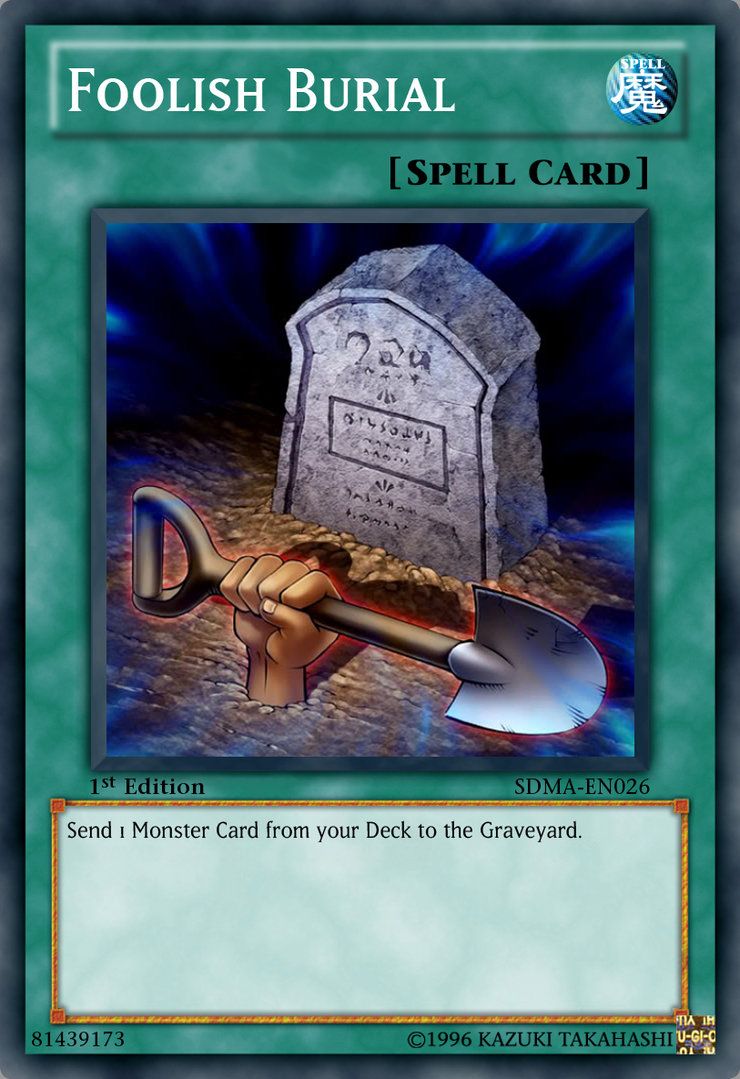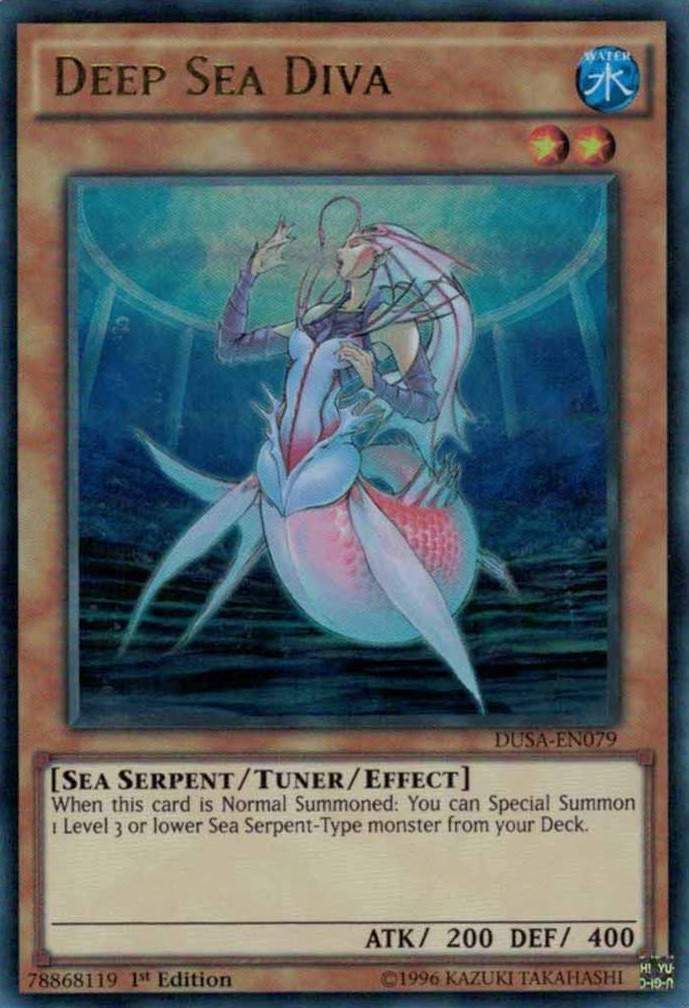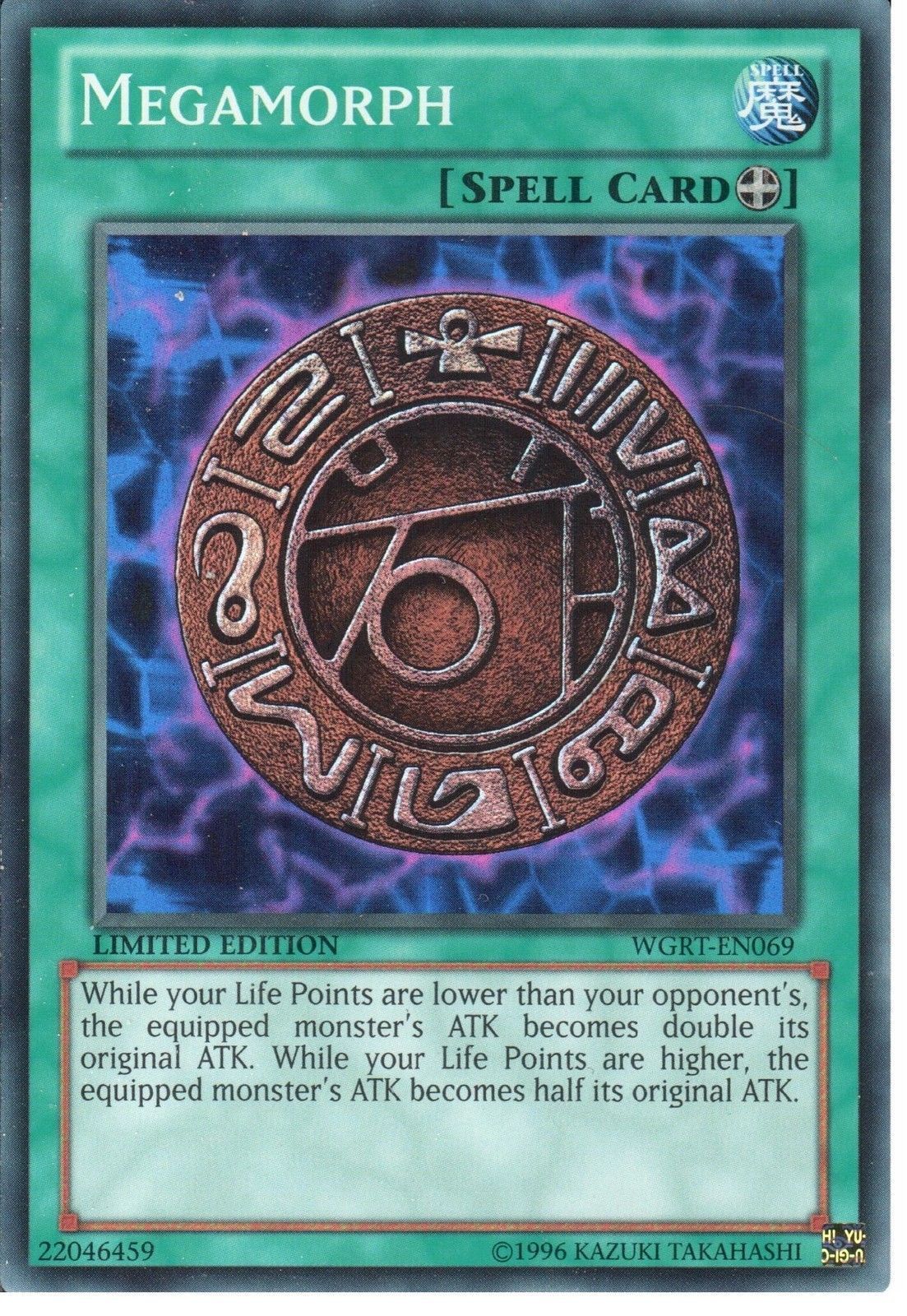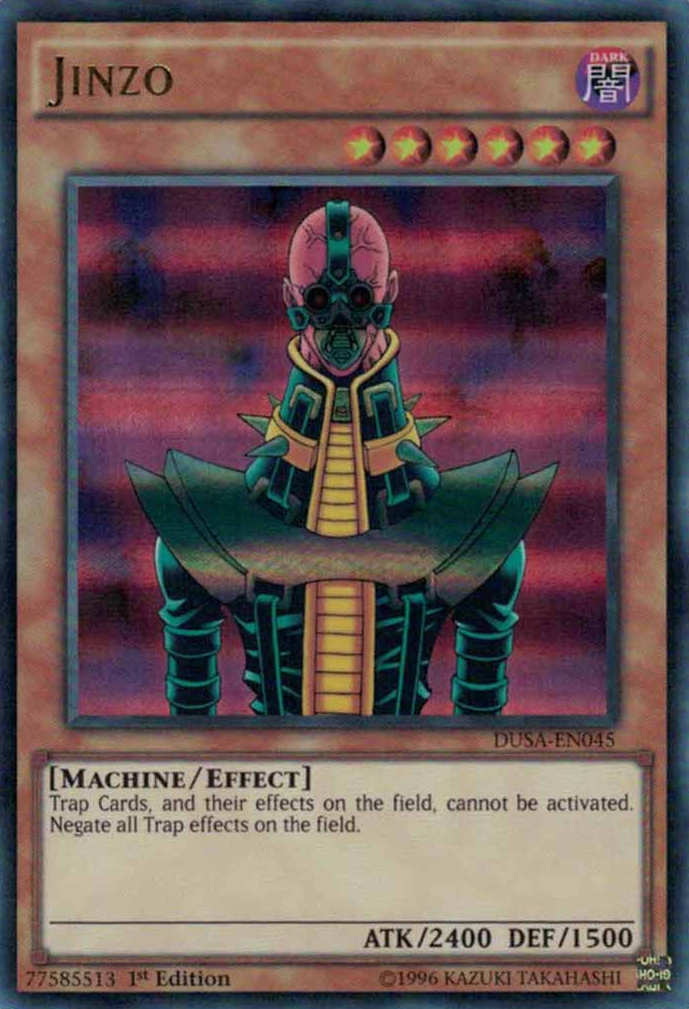There was a time when the Yu-Gi-Oh! competitive scene was in shambles, due to the fact that a handful of cards were totally dominating the metagame with their sheer power. These cards included the two Envoys (Black Luster Soldier - Envoy of the Beginning and Chaos Emperor Dragon-Envoy of the End) which both had an unparalleled ability to sweep the field of enemy monsters, while the Harpie's Feather Duster could remove all of the opponent's Spell and Trap cards with a single move.
The real terror of the Yu-Gi-Oh! competitive scene was Yata-Garasu, which was the key player in the "Yata-Lock" strategy, which dominated every other kind of deck that was available at the time.
In order to combat these extremely powerful cards, a Forbidden list was created that banned certain cards from being used in competitive tournaments.
There are a lot of incredibly broken Yu-Gi-Oh! cards that deserved a place on the Forbidden list, but they were allowed to wreak havoc on the tournament scene without being banned. They may have been limited in the amount that you could use in your deck, but the presence of these cards in your deck could still give players an overwhelming advantage.
We are here today to look at the Yu-Gi-Oh! cards that should have been legally banned. From the trap that drained the skills of the opponent's monsters, to the robot that nullified one of the central aspects of the game.
Here are the 15 Yu-Gi-Oh! Cards That Should Have Been Banned!
Honest
There are some cards in Yu-Gi-Oh! that can activate their effect, while still in the player's hand. This method of activation is incredibly hard to counter in most circumstances, as most cards that negate or destroy other cards can only affect them when they are on the field. The reason Honest is so dangerous is due to how it has two effects that help it to achieve it's "played from the hand" ability.
Honest can be returned from the field to the hand for free during your main phase, which makes it easy to protect from new threats that have appeared on the field.
Honest's true strength lies in the fact that it can be sent from your hand to the Graveyard in order to boost the ATK score of one LIGHT monster on the field, by the same number as that of an attacking opponent. The fact that this ability is so good and cannot be easily countered is what makes H0nest so overpowered.
Mobius The Frost Monarch
The Monarch cards were some of the most annoying and broken creatures ever included in the Yu-Gi-Oh! card game. The Monarchs all required a single sacrifice and had a power that made them worth the effort of bringing to the field.
There are arguments to be made for each of the original Monarchs appearing on this list, as only Raiza the Storm Monarch was ever restricted and none of them were banned. Mobius is the one who deserves the spot, as his ability to destroy two Spell and Trap cards was incredibly useful. In some ways, Mobius was better than cards like Jinzo, as it had the ability to destroy threats that were on the field, instead of merely suppressing them. Mobius could also affect Spell cards, which meant that it could undo a lot of strategies that were popular at the time of its release
Tour Guide From The Underworld
The creators of Tour Guide From the Underworld did their best to nerf its ability to summon an extra creature to the field by limiting the summoned creature to a Fiend-type monster and negating any effects it may have. The summoned creature also cannot be used as a material for a Synchro Summon.
With all of these restrictions in place, how did players find a way to abuse the effects of Tour Guide From the Underworld?
It's possible to restore the summoned creature's effect by finding a way to temporarily banish it from the field or by turning it over, such as with the effect of Book of the Moon. The introduction of Xyz Summons also meant that Tour Guide From the Underworld could instantly bring out a level three Xyz Monster onto the field in a single turn. This meant that Tour Guide From the Underworld quickly became one of the best tutors in the game.
Reckless Greed
Reckless Greed might seem like a balanced card on the surface, but it's effect is actually quite easy to take advantage of. The effect of Reckless Greed allows you to draw two cards in exchange for skipping your next two Draw Phases. This will almost always be to the player's advantage, as having access to more cards will give you more of a chance to take control of the field.
Reckless Greed has actually become even more unbalanced, as it is no longer Semi-Limited. This means you can run three of them in your deck. The official ruling of effects that skip the Draw Phase is that they don't accumulate, which means that you could use three Reckless Greeds to draw six cards and only skip two Draw Phases.
Limiter Removal
Limiter Removal is similar to Megamorph in that it doubles the ATK score of all Machine creatures on the field, at the cost of destroying them at the end of the turn.
Limiter Removal existed during the first era of Yu-Gi-Oh! as it was used by Duke Devlin during his duel with Joey Wheeler.
The potential of this card hadn't been realized at that point in time, as only a handful of Machine creatures existed and they were outclassed by Dragons, Fiends, and Spellcasters.The release of Cyber Dragon and its numerous support cards meant that Limiter Removal suddenly became one of the most dangerous Spell Cards in the game. If you could get two Cyber Dragons on the field and activate Limiter Removal, then there is a good chance you have won the duel, as their combined ATK score would be over eight-thousand.
Deck Devastation Virus
The Deck Devastation Virus card is an already nerfed version of the Crush Card Virus, which was one of the most powerful cards in the game and was rightly banned for many years.
The Deck Devastation Virus card is actually better than the Crush Card Virus in some respects, yet it has mostly avoided restrictions.
It is harder to use the Deck Devastation Virus' effect, as it requires the sacrifice of a DARK monster with 2000 ATK points. If you can pull this off, then you get to inspect your opponent's hand for the next three turns and destroy all cards with 1500 ATK or less that they have in their hand during that time. This effect became even stronger as the Yu-Gi-Oh! metagame changed, as weaker monsters became more popular, due to how Synchro and Xyz Summons worked. Yet, the Deck Devastation Virus was never banned.
Skill Drain
Skill Drain is one of a handful of cards that prevents an entire type of card from working when it is on the field. When Skill Drain is activated, it will negate the abilities of all Effect Monsters that are on the field. Skill Drain requires a cost of 1000 Life Points to activate, but it will remain on the field until it is destroyed.
There are a lot of deck types that rely heavily on Effect Monsters, which means that Skill Drain would be able to shut them down for a relatively small cost.
Skill Drain can also be used for repressing the negative abilities of certain Effect Monsters, like Dark Elf, Goblin Attack Force, and Panther Warrior, so that they could attack freely without having to pay a cost or have their positions automatically changed.
Solemn Warning
Solemn Warning is an attempt at balancing out an older card called Solemn Judgement, which was regarded as being one of the most overpowered cards in Yu-Gi-Oh! Solemn Judgement allowed you to negate pretty much any card that was played for the cost of half of your life points. The sheer utility of this card led to it being a frequent fixture on the Forbidden list.
The effect of Solemn Warning allows you to prevent any creature from being summoned (regardless of whether it is a Normal Summon/Set or a Special Summon) for the cost of 2000 Life Points. This is a step down from the power of Solemn Judgement. But, the popularity of Special Summons and decks built around Fusion, Synchro, and Xyz Summons mean that Solemn Warning will be highly-effective against pretty much every opposing strategy in the game.
Magic Cylinder
The power of a Yu-Gi-Oh! card is often defined by the competitive scene in how many cards it costs to equal its effects. Pot of Greed is the chief example of an overpowered card, as it gives you two free cards in exchange for one, which means that there is no reason not to use one in your deck. This was the case for years until Pot of Greed was banned.
Magic Cylinder has a similar kind of effect as Pot of Greed.
Magic Cylinder can negate an enemy attack and send the damage right back at the opponent. This meant that it was possible to defeat your opponent with a single Trap Card in the right situation, even if they held the advantage on the field. This was why Magic Cylinder was Limited for so long, but it deserved to be outlawed.
Gold Sarcophagus
The vast majority of competitive card gamers will use the minimum amount of required cards in their deck. This is due to the fact that some of the best cards in each game are also the most expensive, so the player wants to give themselves as much of a chance as possible to draw the cards that they need.
Gold Sarcophagus offers the player a chance to draw any card from their deck, so long as they are ok with waiting for two turns until they can get it. This makes Gold Sarcophagus one of the best additions to any Exodia deck. Especially in the formats where it is not restricted, as you can find several of the pieces in a few short turns. Gold Sarcophagus' effect can also be bypassed by certain cards, such as D. D. Scout Plane, in order to bring creatures onto the field without having to wait for two turns.
Soul Charge
There used to be a lot of Yu-Gi-Oh! cards that could summon creatures from the Graveyard for free. These cards were slowly phased out over time, due to how overpowered they were. Cards like Monster Reborn and Premature Burial allowed you to perform a free summon from the Graveyard, which could be combined with cards, like Foolish Burial, to bring any card to the field.
Soul Charge was a return to the glory days of summoning creatures from the Graveyard.
To use Soul Charge, you can pay 1000 Life Points per creature to summon different slain monsters to the field. You couldn't conduct a Battle Phase during the same turn that you used Soul Charge, which was a small price to pay for filling up your field with creatures. It's possible to quickly turn the tide of battle in your favor with the use of a single card and it doesn't require much strategy to pull off.
Foolish Burial
Joey's usage of Foolish Burial in the Yu-Gi-Oh! anime and manga shows just how amazing it is, due to its combo potential. All you need is to have Foolish Burial and a card that could return a creature from the Graveyard to the field, in order to summon any monster from your deck. This allowed you to bypass summoning requirements for higher-level creatures and you could do so in a single turn.
It took a long time for Foolish Burial to be restricted, which has to do with the fact that new creatures were released that benefitted from being in the Graveyard. Foolish Burial deserved to be banned rather than restricted, as its effect was too good for a card that had no other costs or drawbacks.
Deep Sea Diva
It took a while for Sea Serpent decks to reach a real competitive status, as they didn't receive a lot of support cards until the release of the Raging Battle set. Deep Sea Diva is a Tuner that summons another level 1-3 Sea Serpent creature to the field.
Deep Sea Diva is one of the best Sea Serpent creatures in the game, due to how it is integral to several incredible combos.
This is commonly paired up with Atlantean Heavy Infantry, which allows you to perform an extra Normal Summon or Set during the Main Phase. These creatures combined give you a lot of options for summoning different Sea Serpents from the deck, which you can use to quickly perform some high-level Synchro and Xyz Summons, such as being able to bring Mermail Abyssmegalo to the field.
Megamorph
Megamorph was a key player in one of the most devastating combos in the Yu-Gi-Oh! competitive scene. This was due to Cyber-Stein, which had the ability to summon a Fusion Monster to the field for the cost of 5000 Life Points. This meant that you could summon a creature with over 4000 ATK points to the field. You could then equip it with Megamorph, which doubled its ATK score, which would give it over 8000 ATK points. If you had a clear shot against the opponent, then you have won the duel.
Cyber-Stein has been on and off the Forbidden list over the years, but Megamorph has never been so much as restricted. This is despite the fact that Megamorph can be used in other combos that can end the match in a single turn, such as one involving Evil HERO Infernal Gainer and Evil HERO Dark Gaia.
Jinzo
Jinzo was a prominent card in the original Yu-Gi-Oh! manga, as Joey Wheeler won it from Esper Roba during the Battle City Tournament and used it for the remainder of the series. The version of the Jinzo card that appeared in the Yu-Gi-Oh! manga was actually different than the one from the card game, as it was a level seven creature. This meant that it required two sacrifices in order to be summoned to the field. Jinzo was changed into a level six creature in the Yu-Gi-Oh! anime and card game, which meant that Joey's battles needed to be rewritten.
Jinzo deserved a spot on the Forbidden list for a long time, but it managed to skate by with a Limited and Semi-Limited status throughout most of its existence.
The original version of Jinzo was far more balanced, as its powerful effect is befitting that of a creature which requires two sacrifices. The fact that Jinzo was changed into a level six monster turned it into one of the most useful cards in the game, to the point where it saw use in every kind of deck imaginable for years to come.
Jinzo's effect suppresses the effects of all Trap cards on the field, which means that a portion of the opponent's cards will become useless until Jinzo is disposed of. The fact that Jinzo also had 2400 ATK points meant that it was also a threat in battle, with only a handful of other level six creatures being able to exceed its strength.
--
Did we miss any Yu-Gi-Oh! card that should be banned? Tell us in the comments below!

